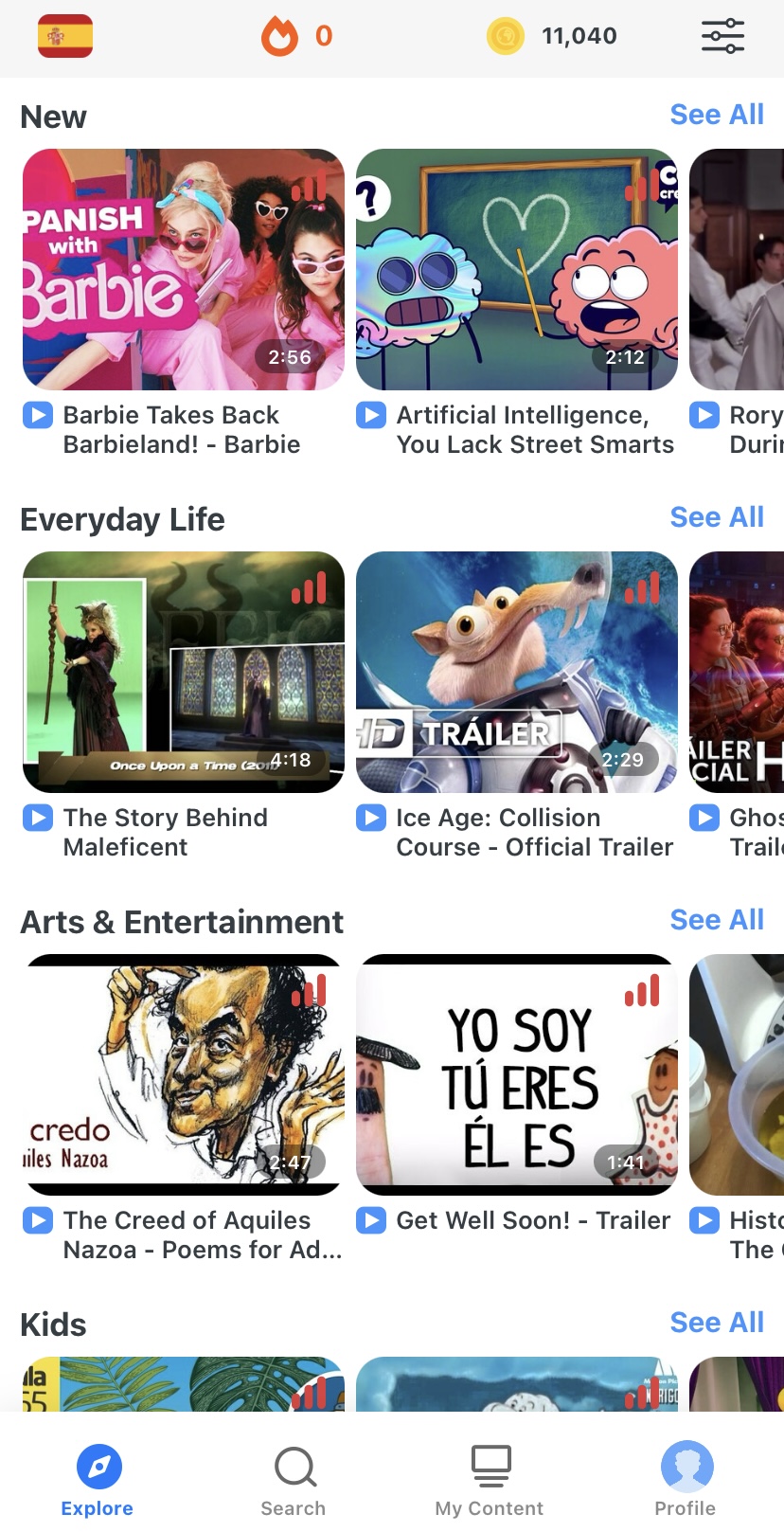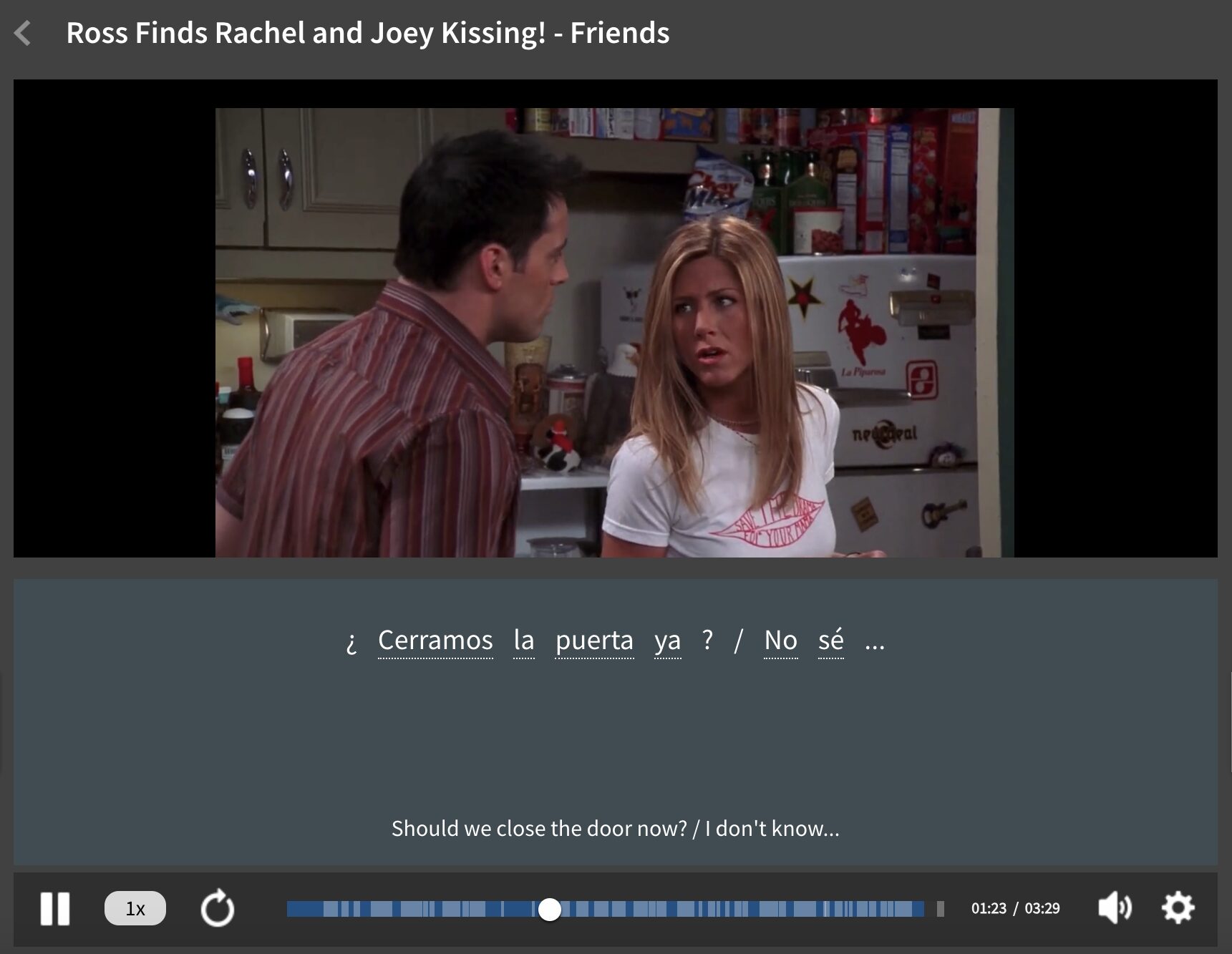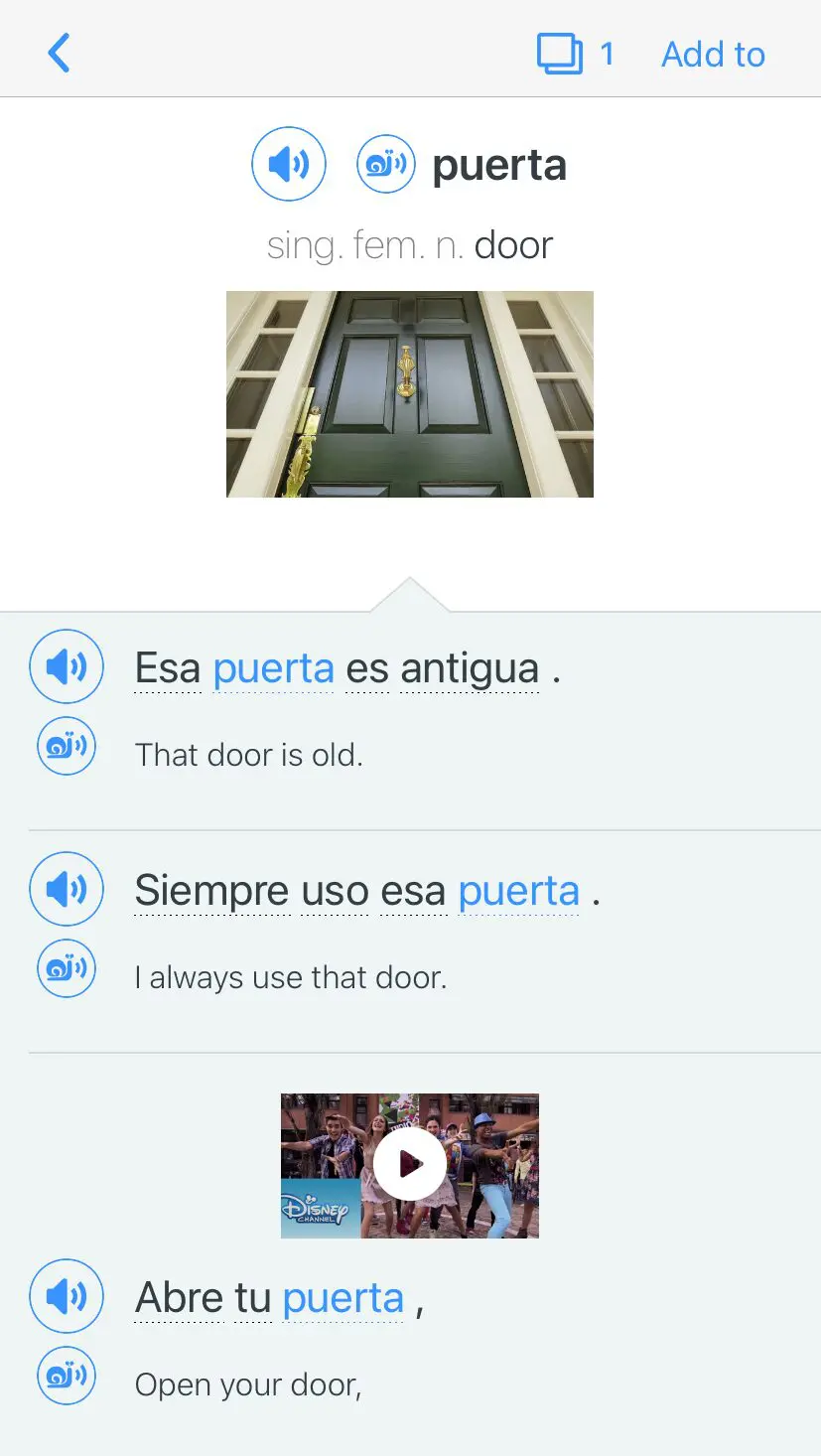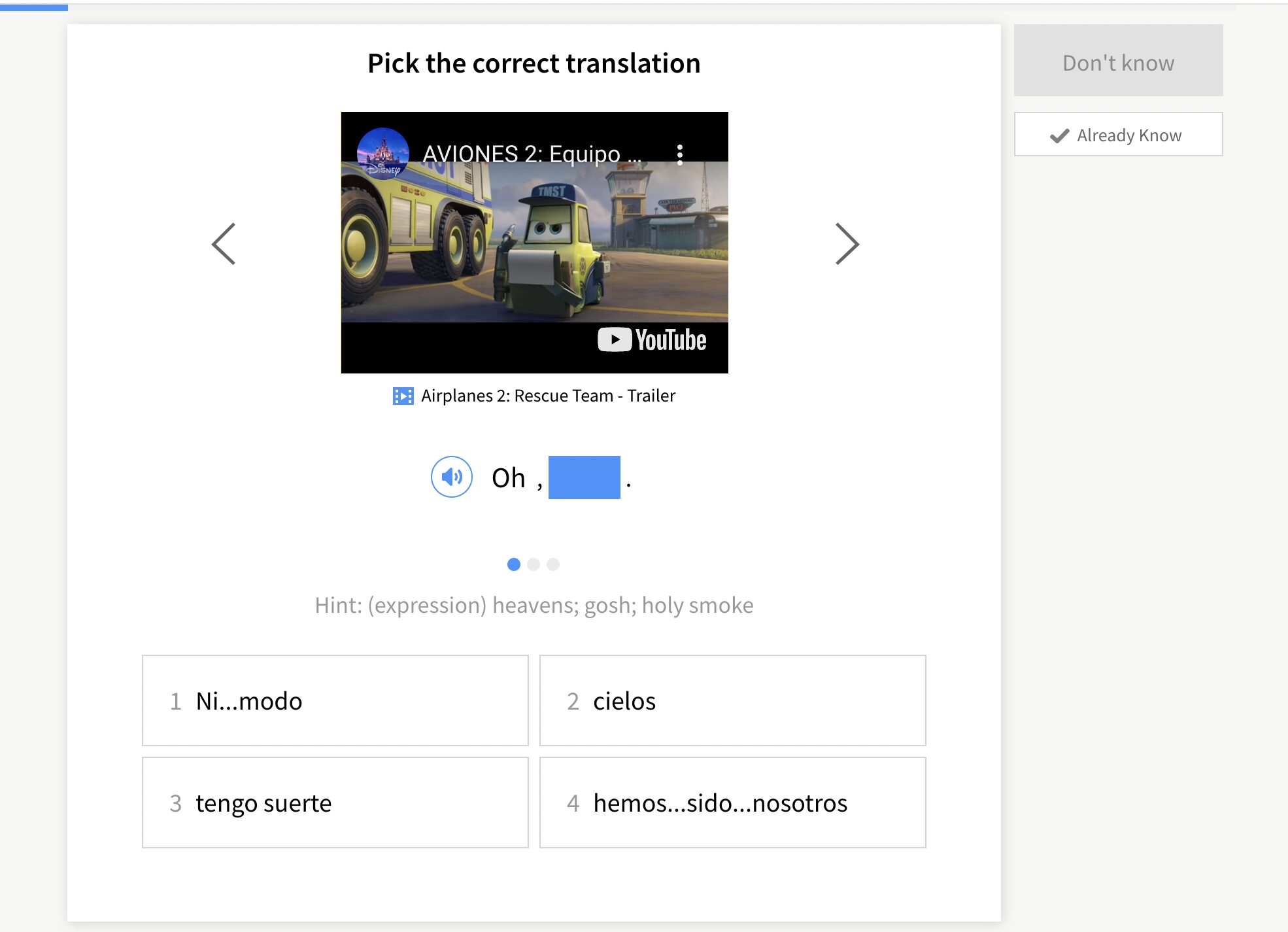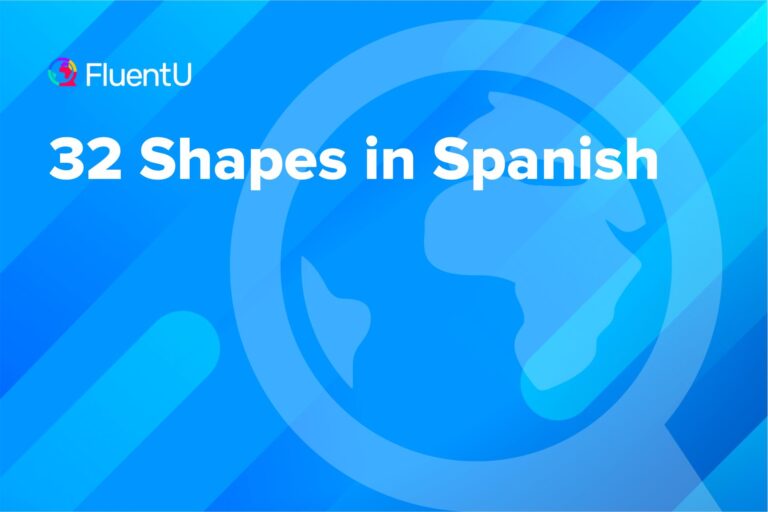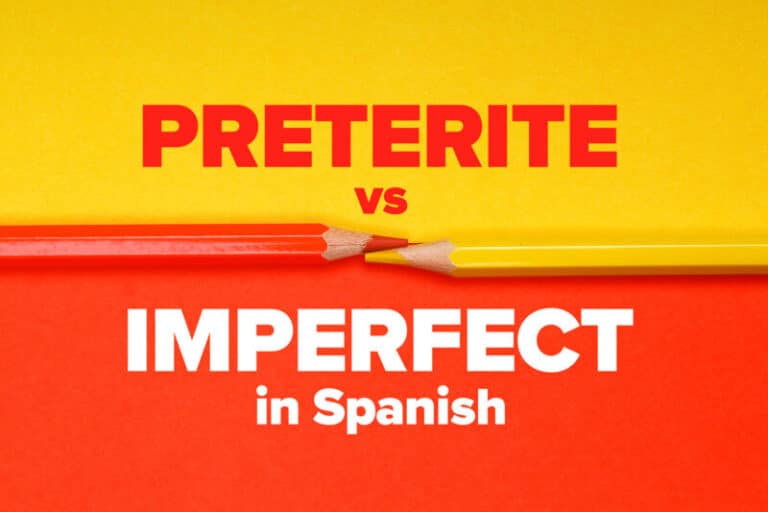Contents
- 1. Subscribe to Spanish Media
- 2. Immerse Yourself in a Specialized Program
- 3. Get a Language Exchange Partner and Speak a Lot
- 4. Listen to Audiobooks
- 5. Move to or Visit a Spanish-speaking Country
- 6. Get a Spanish-speaking “Partner”
- 7. Write in Spanish Daily
- 8. Talk to Yourself in Spanish Out Loud
- 9. Learn Grammar When Necessary
- 10. Use Music to Your Advantage
- FAQ About Becoming Fluent in Spanish
- And One More Thing…
How to Become Fluent in Spanish (From Someone Who’s Done It)
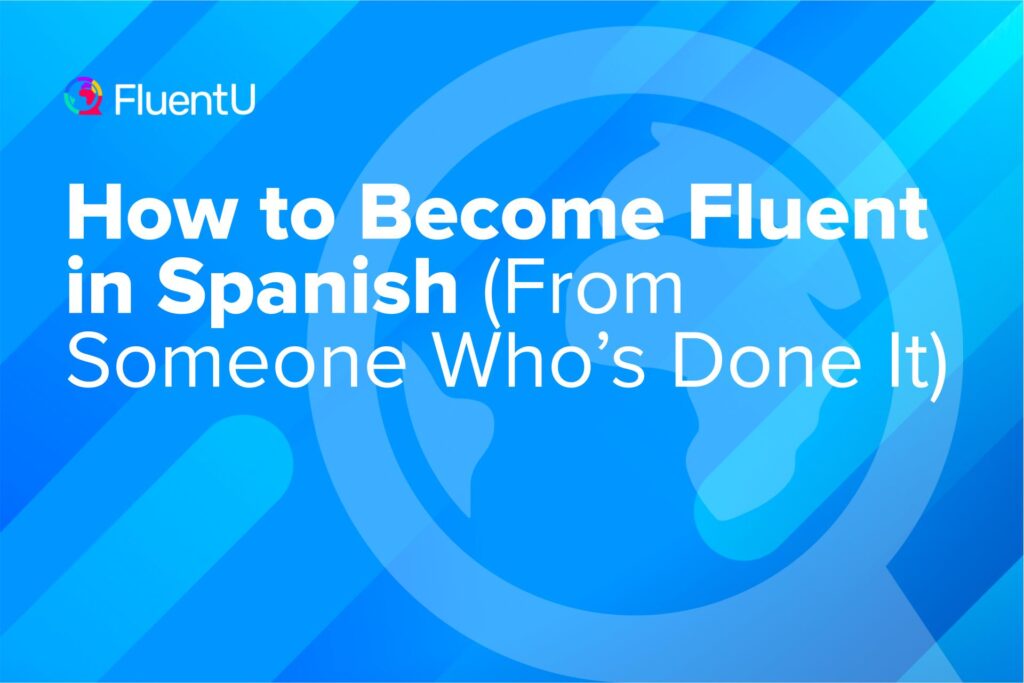
Learning Spanish requires patience and persistence. Trying to speak once in a while and taking courses here and there won’t cut it if you really want to become an independent and fluent speaker.
I’ve been there before, so let me walk you through how to become fluent in Spanish step-by-step, with 10 great tips that will help you boost your skills and encourage you to become more comfortable listening to and speaking the language.
Download: This blog post is available as a convenient and portable PDF that you can take anywhere. Click here to get a copy. (Download)
1. Subscribe to Spanish Media
The first step toward fluency is to consume lots of content, such as Spanish channels on YouTube, Spanish movies, TV channels, Netflix, Hulu and more.
Aim to watch between one and two hours of content weekly, or one movie per week. Two things are essential to this technique:
- Put on Spanish (not English) subtitles. You’ll be listening to and reading Spanish, helping your overall comprehension.
- Jot down 3-5 new words or expressions for every 30 minutes of video content. Keep a little notepad going so you can write down your new words and their contextual uses. How was the word used in the video? Write it down. This will give you approximately 20 new expressions and vocabulary words monthly.
Here are some popular Spanish channels you’ll find in the USA (you can also access many of the videos online through the links included below):
- ESPN Deportes (Sports)
- CNN Español (News)
- Telemundo (News, Sports, Entertainment)
On YouTube, you can subscribe to native Spanish YouTubers and watch their content. And there’s also plenty of educational videos too. For example, if you’re ever confused about a grammar concept, try searching for it on YouTube. There will usually be several videos explaining it.
You can also use the FluentU Spanish YouTube channel, which has in-depth video lessons using Spanish-dubbed episodes from popular TV shows. For example, here’s one from “Friends”:
2. Immerse Yourself in a Specialized Program
An immersion learning program is an online website or app that lets you learn Spanish through authentic content.
Immersion programs curate and recommend appropriate yet challenging content for your level, have subtitles on each video and include learning aids (like clickable subtitles, flashcards or quizzes).
For example, you could try the language learning program FluentU.
FluentU takes authentic videos—like music videos, movie trailers, news and inspiring talks—and turns them into personalized language learning lessons.
You can try FluentU for free for 2 weeks. Check out the website or download the iOS app or Android app.
Click here to take advantage of our current sale! (Expires at the end of this month.)

3. Get a Language Exchange Partner and Speak a Lot
Join your local Spanish conversation club or find a language exchange partner (local or online). Having conversations with native speakers challenges you to use more diverse vocabulary and explain things more in-depth.
Plus, your exchange partner can correct your mistakes, teach you slang and tell you how to speak Spanish more naturally.
Investing one hour weekly to talk with your language partner will pay off huge dividends in the long run. It also incorporates Spanish into your regular life and allows you to form a solid base of conversational Spanish.
And thanks to applications like Skype and online language exchange networks, finding native conversation buddies is a breeze.
You can also check out the following sites:
- Global Spanish Language Meetups (find a local Spanish group)
- ConversationExchange (face to face exchanges)
- MyLanguageExchange (online exchanges)
4. Listen to Audiobooks
Listening to audiobooks while reading is a fantastic tool to increase your literary vocabulary, listening skills, reading comprehension and even writing skills.
To make this an effective strategy, look for books you’ve already read and enjoyed in English then find them and the audio version in Spanish.
Look for less complex writing styles, such as those in Young Adult literature. Alternatively, you can pick an audiobook that covers a topic you know inside and out.
You can even find complete audiobooks available on YouTube, like “The Little Prince” (Antoine de Sain Expury).
Another resource you can use is Librivox, which is run by volunteers and currently has over 600 audiobooks recorded in Spanish.
In addition to audiobooks, Spanish podcasts are always good resources for learners!
5. Move to or Visit a Spanish-speaking Country
If you’re young or have few responsibilities holding you back, move to a new country for a year—and make it a Spanish-speaking destination! There are over 20 Spanish-speaking countries across the Americas, Europe and Africa.
There’s a wide array of university exchange programs, international co-op placements and teaching programs to support you and help you take those first steps.
However, simply moving won’t make you fluent. You have to make local friends.
Avoid moving to a place like Madrid and spending a whole year meeting other Americans, eating at American franchises and talking to Spaniards that only speak English.
Here are a few programs for English speakers in the Spanish-speaking world:
- InsidePeru (paid co-op placements in Peru)
- ChileInside (paid professional development in Chile)
Also, look out for opportunities in the American Embassies in your country of choice.
6. Get a Spanish-speaking “Partner”
Of course, an effective way to become fluent in Spanish (and stay motivated) is to date a native speaker. To a certain extent this one’s just up to destiny. And hey, it doesn’t have to be true love either.
But no matter the nature of the relationship, it’ll open you up to new ideas and experiences when you find someone you get along with well.
You’ll be talking to this person daily. And you won’t only be talking about superficial topics.
Instead, you’ll get to talk about your likes and dislikes, work stories, past experiences, hopes and dreams, feelings, fears, etc.
Your Spanish romance vocabulary will also get a big workout!
There’s also a good chance that a big family will come in a package deal with your partner, and by meeting them you’ll get exposed to culture, food and generally the local ways of thinking and being.
All of this is invaluable for your fluency and language development. Plus, you could have the cutest little bilingual kids if it works out!
7. Write in Spanish Daily
Keep a small notepad or journal by your side at all times. Try to write out your thoughts with 5-10 full Spanish sentences whenever you have a moment.
Writing regularly like this is a great way to get creative, express yourself and improve your fluency in Spanish.
Start by writing at least one entry weekly, then gradually increase this to two. If you’re really invested in your fluency happening sooner rather than later, set aside 15 minutes daily where you write in your Spanish journal.
Make sure you challenge yourself with the topics.
This way, you’ll exercise those verb-conjugating muscles and use past, present and future tenses while extending the reach of your vocabulary.
And when you feel confident, get your language exchange partner to read your entries and make note of any recurring spelling and grammar mistakes.
8. Talk to Yourself in Spanish Out Loud
It’s really important to talk to others, but also to talk to yourself to get used to your voice and speech in Spanish.
Try to do this in private spaces where no one can hear you (at first).
This way you’ll feel safe and free to blab away. Perhaps your safe space will end up being in the car, in the shower or in your bedroom.
Combine this with daily Spanish writing, and you’ll get great results from your fluency practice.
This is also a great technique to work on those tricky pronunciations in Spanish, like rolling your RRs or pronouncing a long word like civilización (civilization).
Try looking in the mirror when you do this, and then record yourself from time to time to hear your progress. Trust me, you’ll notice the difference in your overall fluency and confidence over time.
9. Learn Grammar When Necessary
Should you learn Spanish grammar to become fluent?
Yes, you should.
You need to learn grammar in addition to your vocabulary lists, your listening and speaking exercises and your writing practice.
Learn grammar when you see constructions you don’t recognize. Check grammar rules when you get lost and don’t know how to use a tense, a preposition or even a word you’ve found without context.
Learn your grammar because, without it, you’ll speak Spanish but you won’t achieve fluency. But don’t obsess over it. Give it the importance it deserves. Not more, not less.
If you want a couple of resources to learn Spanish grammar and get closer to that coveted fluency, check out these excellent Spanish grammar resources:
10. Use Music to Your Advantage
Music is a super powerful tool to learn a new language.
Achieving fluency with the help of music may be one of the most pleasant activities you can do. You get to listen to your favorite Spanish artists and understand what they’re singing about.
During my almost 20 years of teaching languages, I’ve tried a lot of methods and approaches with my students, and I think I’ve come up with the perfect set of steps to master it:
- Choose a Spanish song you like. This is the easiest step. Choose a song you want to learn, but pick a native Spanish singer.
- Listen to the song without looking at the lyrics yet. Try to guess what the singer is singing. Listen to the song a couple of times and imitate the pronunciation. You chose a native speaker, so you can be sure he/she has the correct pronunciation.
- Now, look at the lyrics. Read the lyrics and see if you guessed correctly. Underline the words you know and circle the words you don’t understand. Now is the perfect time to look them up in a dictionary.
- Sing along while reading the lyrics. Now that you know what the lyrics mean, you can play the song again and sing with your favorite singer. Mark words with difficult pronunciation or that make you hesitate. It’s very important that you get the pronunciation right, so listen to the song as many times as you need, or use a pronunciation dictionary like Forvo in case of doubt.
- Sing your lungs out. Once you’ve listened to the song enough times to know it by heart, lose the lyrics and sing!
If you have a different method for learning with songs, that’s okay. This kind of practice has to be enjoyable, so do what you like the way you like it.
Here are a few resources you can use to find Spanish music:
You can also check out videos like this one from the FluentU Spanish YouTube channel to take a closer look at the lyrics of songs in Spanish:
FAQ About Becoming Fluent in Spanish
How long does it take to be fluent in Spanish?
According to the Foreign Service Institute (FSI) it can generally take around 600-750 hours of dedicated study to reach fluency. This could span from several months to a few years, depending on your consistency and immersion in the language.
However, how long it takes to achieve fluency in Spanish varies massively depending on factors such as your learning approach, dedication, and starting proficiency.
How can I become fluent in Spanish on my own?
To become fluent in Spanish independently, you might find it helpful to establish a structured learning routine with a mix of resources. You can utilize online courses, textbooks, language exchange platforms, and immersive tools like podcasts or movies.
It’s also important to engage with native speakers to improve conversational skills and cultural understanding. You can find native speakers to chat with on a range of platforms.
As long as you stay motivated and practice consistently, you should be able to reach fluency without taking a formal course!
Can I become fluent in Spanish in a year?
Achieving fluency in Spanish within a year is ambitious but possible if you’re willing and able to put it in the effort. It also depends on your definition of fluency—basic conversational fluency would be more achievable in a year than near-native level fluency.
The main thing is that you surround yourself with the language as much as possible, and take every opportunity to practice it. Try to find as many immersion opportunities as possible so you can get yourself used to understanding and replicating speech.
Now that you know how to become fluent in Spanish, get out there and put these steps into practice!
But most importantly, stick with them long-term.
If you do, your brain will thank you and your Spanish fluency will become personalized to your needs. No longer will you be imitating or translating. You’ll be too busy speaking and communicating for that.
And One More Thing…
If you’re like me and prefer learning Spanish on your own time, from the comfort of your smart device, I’ve got something you’ll love.
With FluentU’s Chrome Extension, you can turn any YouTube or Netflix video with subtitles into an interactive language lesson. That means you can learn from real-world content, just as native speakers actually use it.
You can even import your favorite YouTube videos into your FluentU account. If you’re not sure where to start, check out our curated library of videos that are handpicked for beginners and intermediate learners, as you can see here:
FluentU brings native Spanish videos within reach. With interactive captions, you can tap on any word to see an image, definition, pronunciation, and useful examples.
You can even see other videos where the word is used in a different context. For example, if I tap on the word "puerta," this is what pops up:
Want to make sure you really remember what you've learned? We’ve got you covered. Practice and reinforce the vocab from each video with learn mode. Swipe to see more examples of the word you’re learning, and play mini-games with our dynamic flashcards.
The best part? FluentU tracks everything you’re learning and uses that to create a personalized experience just for you. You’ll get extra practice with tricky words and even be reminded when it’s time to review—so nothing slips through the cracks.
Start using the FluentU website on your computer or tablet or, better yet, download our app from the App Store or Google Play.
Click here to take advantage of our current sale! (Expires at the end of this month.)










